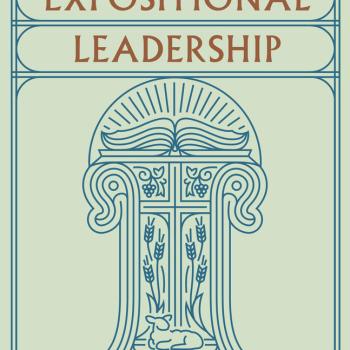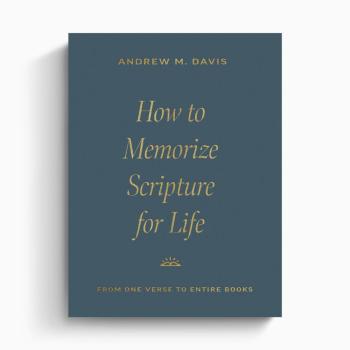Review of Fully Alive: A Biblical Vision of Gender That Frees Men and Women to Live Beyond Stereotypes by Dr. Larry Crab
[DISCLAIMER/WARNING: This review includes some sexual content.]
If you move in Christian circles, there’s a decent chance you’ve heard of the egalitarian/complementarian divide. The topic, of course, is gender roles (and the Bible’s teaching thereon). Whether in the context of marriage or the church, the issue is whether or not there is a difference between men and women when it comes to matters of authority. Egalitarianism, as you might guess, claims that we should not distinguish between the genders: that marriage is a partnership of equals, and that women may serve in positions of spiritual authority in their local churches and larger denominations. Complementarians, on the other hand, argue that there is a God-created distinction between the genders: that while both are possessed of equal dignity and value before God, He has ordained that the relationship between husband and wife be a reflection of the relationship between Christ and the church, wherein the husband assumes the role of spiritual leader or head, and the wife submits to his authority (with a few very specific exceptions). Complementarians also hold that roles of spiritual leadership (pastors, elders, etc.) are reserved to men. For an excellent—and thorough (if slightly academic)—discussion of the nuances of and scriptural support for complementarianism, I recommend Recovering Biblical Manhood and Womanhood, a collection of essays edited by John Piper and Wayne Grudem.

However, since Recovering Biblical Manhood and Womanhood clocks in at upwards of 500 pages, several authors have attempted to condense the teachings of complementarianism down to a more manageable size, and maybe throw in a bit of practical application along the way. (See, e.g., Real Marriage, by Mark Driscoll; The Meaning of Marriage, by Tim Keller; Sex, Romance, and the Glory of God, by C.J. Mahaney; Love That Lasts, by Gary and Betsy Ricucci; and the rather unsettling Doing Things Right in Matters of the Heart, by John Ensor. More on that another time.) Dr. Larry Crabb’s Fully Alive appears to be just such a book.
For Crabb, the heart of biblical manhood or womanhood is rooted in the different genders’ ways of relating. Women, according to Crabb, should relate in an open and inviting way, welcoming and nurturing others and being willing to both give and receive. Wives should submit to their husbands (though Crabb is a bit confusing on this point, as all of his examples involve disobedience-as-submission—a situation that can certainly arise, but which paints a rather misleading picture of the normal daily pattern of submission). Men, on the other hand, should remember God’s truth and move towards others in love. Nothing too objectionable there, right?
The trouble is the foundation of Crabb’s framework. Although the book purports to be based on a biblical understanding of femininity and masculinity, the primary basis for Crabb’s ideas seems to be … the sex act. Or at least the human reproductive system. Like John Eldredge before him, Crabb sees in sexual intercourse a physical picture of biblical gender roles. Actually, no. That’s not accurate. That might be ok. Crabb seems to see gender roles as a picture of sex. In other words, rather than starting with a study of Scripture as a whole in an attempt to discern its teaching on gender, he seems to start with sex and then cherry-pick the bible verses that best support his claims.
The entirety of his argument regarding ‘biblical’ femininity seems to rest on the fact that the Hebrew word for ‘female’ is etymologically connected to the word for ‘perforated or punctured’—that is, something with holes in it. Even assuming that he’s done his homework here, and that the etymological connection is a reference to the female sex organ—that somewhere back along the line, the Hebrew term for female was essentially ‘something you nail’—those etymological connections are not an adequate basis for an entire philosophy of gender. But this is precisely what Crabb does; he essentially says, ‘Hey, the word “woman” comes from the word “vagina”; therefore, whatever a vagina does, a woman should also do.’ Hence, a ‘biblically’ feminine woman is ‘opened to receive others who come to her’ and ‘warmly and pleasurably surrounds those she receives’ (44). And, because one of the Greek words for ‘woman’ is connected to the breast, a woman also nurtures and nourishes (46).
Meanwhile, the definition of masculinity doesn’t fare much better: more etymological manipulation, and you wind up with words meaning ‘to make a mark’, ‘to lift or carry,’ and possibly ‘to point or move’. Or ‘to remember’ (67-68). He’s a little unclear on how the remembering bit fits into the whole biblical sex pageant. Again, this reasoning boils down to ‘The word “man” comes is related to the word “penis”; therefore, whatever a penis does, a man should also do.’ It follows (to Crabb) that a biblically masculine man remembers what he has learned (not sure what this has to do with the penis metaphor) and moves into a situation relationally.
And if all of this sounds like a bunch of crummy double entendres to you, you are not alone. It also leads to some very unpleasant sentences like ‘I was not moving as a man across the bridge to pour sacrificing love into an opened woman’ (69). (Oh, yeah, I forgot to mention: there’s also a bridge.) There’s an ick factor, is what I am saying.
More than that, this whole thing is bad news, exegetically speaking.
Renowned expositor D.A. Carson, in his excellent (if truncated) book Exegetical Fallacies, specifically decries what he terms ‘The Root Fallacy’:
One of the most enduring of errors, the root fallacy presupposes that every word actually has a meaning bound up with its shape or its components. In this view, meaning is determined by etymology; that is, by the root or roots of a word. […] All of this is linguistic nonsense. We might have guessed as much if we were more acquainted with the etymology of English words. […O]ur word nice [] comes from the Latin nescious, meaning ‘ignorant.’ […] But I know of no one today who in saying such and such a person is ‘nice’ believes that he or she has in some measure labeled that person ignorant because the ‘root meaning’ or ‘hidden meaning’ or ‘literal meaning’ of ‘nice’ is ‘ignorant.’ […]
[The root fallacy] is no more intrinsically realistic than deriving the meaning of ‘butterfly’ from ‘butter’ and ‘fly’ or the meaning of ‘pineapple’ from ‘pine’ and ‘apple.’ Even those of us who have never been to Hawaii recognize that pineapples are not a special kind of apple that grows on pines. (28-30)
Look, there is a lot of biblical evidence supporting complementarianism; the Bible’s teaching on gender and marriage is robust and complex. If you take the time to read Piper and Grudem (a task well worth your time and effort), you’ll see that the case for complementarianism does not hang on the slender thread of an amateur word study. But Crabb’s entire framework is built on a few isolated etymological histories and a collection of anecdotes (‘I tried it! It worked! It must be true!’).
Which is a shame, because most of Crabb’s actual practical advice is fairly sound. Just … not for the reasons he thinks it is.
_______________________________________________________________
This book was reviewed—somewhat belatedly—in connection with the Patheos Book Club.
Alexis Neal regularly reviews young adult literature at www.childrensbooksandreviews.com and everything else at quantum-meruit.blogspot.com.












